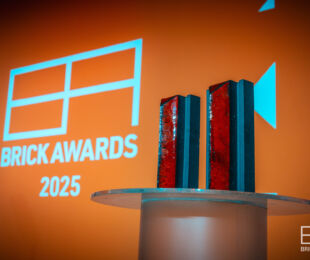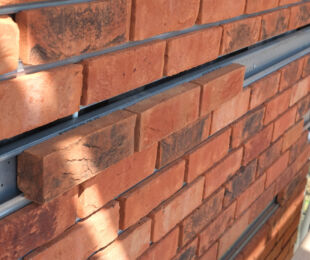
CLAY BRICK MANUFACTURING PROCESS ENSURES EXCEPTIONAL QUALITY
Keith Aldis, CEO of the Brick Development Association (BDA)
The production of clay bricks is a testament to the unwavering commitment of the UK brick industry to quality and consistency. Stringent quality control measures are in place across the entire production chain, from raw material extraction (clay winning) to final product dispatch. But what are the fundamental elements that make clay bricks manufactured in the UK so exceptional?
It begins with the raw materials. Brick manufacturers typically have their own on-site laboratories or partner with external labs to analyse the chemical composition and physical properties of the clay and other raw materials before they enter production. This ensures they meet the desired specifications for the final product. Partner labs are UKAS accredited, providing credibility to the process.
Testing
Before shaping a clay brick, manufacturers unlock the clay's potential through a series of physical property tests. These tests involve analysing the particle size distribution, assessing the clay's ability to be moulded, dry evenly, and ultimately transform into a strong, beautiful clay brick.
Particle size analysis helps predict drying behaviour and mouldability, minimising the risk of cracks. Plasticity testing identifies clays that hold their shape for precise brick formation, leading to stronger final products. Drying shrinkage tests ensure minimal size reduction after drying, preventing cracks in finished bricks. Firing tests determine the ideal temperature range for optimal strength and to avoid defects like warping or bloating.
During the mixing and shaping stages, checks are made for consistency, size, and dimensional accuracy. Automated production lines typically incorporate sensors and monitoring systems to continuously assess the consistency of the clay mixture. Additionally, random samples might be pulled for dimensional checks using callipers or specialised jigs to ensure they meet the required size and shape specifications.
Dimensional stability
Modern kilns used for firing bricks are equipped with temperature and humidity controls. Data loggers or recorders track these parameters throughout the firing cycle, ensuring the bricks are subjected to the precise temperature and time profile needed to achieve optimal strength and dimensional stability.
Visual inspections are conducted by trained factory operatives throughout the manufacturing process to identify cracks, warping, or discolouration. This process is also aided by automated camera systems in some factories.
By combining methods such as spectrophotometers, colour matching cabinets, trained colour specialists, and digital colour management systems, UK manufacturers ensure that the fired bricks from different batches maintain a consistent colour, meeting the desired aesthetic and quality standards.
BDA members conduct these rigorous checks throughout the production process to ensure the chosen clay is appropriate for the desired type of brick (common, facing, engineering). They can adjust moisture content, firing temperature, or blending with other clays to achieve optimal results. They can also reduce the risk of cracks, warps, and colour inconsistencies, whilst at the same time ensuring consistent quality across production batches.
BQC
It’s important to look for the Brickmakers Quality Charter (BQC) logo as a mark of this quality commitment. By promoting responsible manufacturing and sustainable supply chains, the Charter recognises the BQC certified brickmakers' adherence to rigorous quality standards across the entire manufacturing process, giving you confidence in the clay bricks you choose.
From start to finish, UK clay brick production emphasises consistent quality and an attention to detail that sets the industry apart. The UK industry strives to ensure every clay brick meets the required specifications and performs flawlessly regardless of the type or style of building project.



